A selection of low-growing, early-fruiting and productive varieties of apple trees
Dwarf apple trees attract gardeners both for their compactness and high productivity, resistance to diseases and early fruiting. Owners of small plots will benefit from planting low-growing apple trees.Descriptions of the best varieties of dwarf apple trees with photos and reviews give an idea of the possibility of using them for the Moscow region and central Russia. I would especially like to note that dwarf varieties are not columnar varieties, they are a completely different variety of apple trees.
| Content:
|
|
With proper care, dwarf varieties of apple trees can actively bear fruit in the middle zone for up to 20 - 30 years |
Advantages of low-growing apple trees:
- miniature sizes;
- precociousness - obtaining a full harvest for 2-4 years;
- high yields due to dense plantings;
- ease of orchard care;
- frost resistance.
Disadvantages include:
- instability of apple trees when overloaded with crops or during strong winds due to the superficial location of the roots;
- short productivity period - no more than 20 years, but this can be attributed to the advantages of the varieties; it becomes possible to change apple tree varieties more often and try new tastes.
Dwarf apple trees are often confused with columnar varieties.
Main differences:
- The crown diameter of dwarf apple trees is up to 3 meters. Columnar varieties have no branches on the trunk, the crown diameter is a maximum of 50 cm.
- Seedlings of low-growing varieties can be easily identified by the presence of large buds at the ends of the branches.
- The total height of the dwarf trunk does not exceed 50 cm.
Early (summer) varieties
Wonderful
|
Late summer ripening variety. It is characterized by winter hardiness and productivity. Undemanding to soil composition and groundwater level. The branches are positioned low to the ground, making harvesting easier. |
Thanks to non-simultaneous flowering, the apple tree manages to preserve part of the ovaries during short-term frosts. Another important quality of the variety is that it can easily tolerate stagnant water.
- The height of the tree on a dwarf rootstock is 1-1.5 m. The crown is wide, with a diameter of up to 3 m.
- The variety is self-fertile, but the yield will be significantly higher if apple trees are planted nearby: Anis Sverdlovsky, Prizemlennoye, Bratchud.
- Fruit ripening occurs in early to mid-August. Fruiting begins already in the third year, the apple harvest is regular.
- Productivity - 80 kg.
- The fruits, weighing 180-200 g, have a round, slightly flattened shape. The skin is light green with blurry pink streaks. Apples are sweet and sour, with a fruity aftertaste. The pulp is juicy, with a delicate aroma. Apples can be stored for at least a month.
- The variety is resistant to scab, fruit rot, and powdery mildew.
- Frost resistance -35°C. Climatic zone: 4. Suitable for planting in the Moscow region and the middle zone.
“I’m impatient, give me everything at once. Waiting seven years for a harvest from a vigorous apple tree is not for me. It’s good that there are dwarf apple trees. Everything is fast and accessible. And Wonderful is a real miracle in the garden. It looks decorative, but the harvest is real.”
Early sweet
|
The variety is attractive due to its high winter hardiness, productivity and high immunity to diseases. Fruiting occurs every year. |
- The height of the tree is 1.5-2 m. The crown is flat-round.
- The harvest ripens by early August.
- Productivity: 60 kg. Fruiting is annual.
- The fruits, weighing 70-90 g, are light yellow in color. The pulp is light cream and juicy. Apples are tasty and sweet. The fruits are not stored for a long time.
- Resistance to scab at a high level.
- Frost resistance: -36°C. Climatic zone: 4. Moscow region, middle zone.
“Not long ago I learned about the Early Sweet variety.I found a description, a photo, and read a lot of positive reviews. This year I received my second harvest from the apple tree. High frost resistance and high yield. I recommend."
Melba
|
The variety is characterized by high productivity, early ripeness, and bears fruit from the age of three. The lifespan of a dwarf tree is 15 years. |
Melba or Melba on a dwarf rootstock looks like a columnar tree in the first years. With age, the crown becomes rounded and slightly raised.
- The size of the tree on a dwarf rootstock is up to 2 m.
- Pollinators: Suislepskoye, Stark Erlist, Antonovka, Borovinka, Bellefleur-chinese.
- Apples ripen in the first half of August.
- Productivity – 50 kg.
- The apples are medium size, weight up to 150 g. Round shape. The taste is sweet, with a caramel aftertaste. The color is yellow-green with a crimson blush. The fruits are stored for up to two weeks in the cold.
- Average resistance to scab pathogens.
- Frost resistance: -30°C. Climatic zone: 4. Can be grown in the Moscow region and the middle zone.
“I planted Melba more than 10 years ago. She got on well. They began to produce harvests after three years. To get a lot of apples, you need care. First of all, fertilizing and pest control should be carried out. The apples are firm, but aromatic, sweet and sour. Stored well."
Candy
|
The variety is high-yielding, unpretentious, early ripening. Candy quickly recovers when damaged by return frosts. The first fruits can be expected in the second year of life. |
The disadvantages include susceptibility to scab pathogens under adverse weather conditions. Does not tolerate transportation.
- When grown on a dwarf rootstock, the height of the apple tree does not exceed 1.7 m.
- Pollinators: Melba, Anise, Glory to the Winners, Korobovka, Striped Cinnamon.
- The fruits are harvested from late July to mid-August.Fruiting may shift due to unfavorable weather conditions.
- Productivity: 35 kg.
- The apples are smaller than average in size, weighing up to 180 g. The shape is round, the surface is ribbed. The skin is matte, golden with red streaks. The pulp is juicy and sweet. It tastes like pear. The fruits are stored for no more than a month.
- The variety is susceptible to scab.
- Frost resistance: -28°C. Climate zone: 3.
“The Candy apple tree was planted for children. And we are very happy with this decision, because these apples are the most delicious of all summer varieties. Most fruits are eaten while still green, they are so tasty, sweet and juicy. And from what remains, I make jelly and jam for the winter.”
mundane
|
Low-growing frost-resistant apple tree. The branches grow horizontally, some of the shoots rise upward. The variety is characterized by good yield and early fruiting. |
Gives away the harvest from the third year. Mainly used for processing. Apples make delicious jam.
- The height of the tree on the clonal rootstock is 1.5-2 m. The crown is flat-rounded.
- Pollinators: Candy, Wonderful, Early sweet.
- Harvesting is necessary in August. Fruiting is regular.
- Productivity - 130 kg.
- The fruits are small, 90 -110 g, spherical in shape. The skin is green with a dark red blush. The taste is sweet and sour. The pulp is greenish, juicy, with a faint aroma. Storage lasts about 2 months.
- This variety has excellent resistance to scab.
- Frost resistance: -40°C. Climatic zone: 4. Can be grown not only in the middle zone, but also in the North-Western part of Russia.
“For variety, we can plant. But not as a main variety. These apples are just for fun, tasty, but a bit small. They are stored well, but the longer they sit, the more unpleasant and soft the pulp becomes.Although it’s quite suitable for canning.”
Middle (autumn) varieties
Moscow red
|
A productive and hardy variety with tasty, aromatic fruits. The apple tree has a small and neat crown. It begins to bear fruit in the 3rd year. Frost resistant. |
- The dimensions of the tree on a dwarf rootstock are 2 m.
- Pollinators: Carpet, Snowdrop, Bratchud.
- Fruit ripening: September.
- Productivity: 70 kg.
- Large fruits, weighing 150-250 g, have green skin with a yellow-red blush. Round shape. The taste is sweet and sour. The harvest is stored after harvest for 2-2.5 months.
- Immunity to diseases and pests is high.
- Frost resistance: -38°C. Climate zone: 4.
Carpet
|
Autumn variety. Fruiting in young trees is annual; with age, periodicity appears. Does not tolerate drought well. |
- The dimensions of the tree on a dwarf rootstock are 1.2-1.5 m.
- Pollinators: Snowdrop, Sokolovskoe, Prizemlennoe.
- The fruits are harvested in early September. The apple tree bears fruit in the third or fourth year.
- Productivity - 60 kg.
- The weight of the apple is from 170 to 190 g. The color of the fruit is greenish-yellow with a red blush over most of the surface. The pulp is sweet, moderately juicy. The fruits are stored for 2 months.
- Resistance to fungal diseases is average.
- Frost resistance: -41°C. Climatic zone: 4. Moscow region, middle zone, North-Western regions.
“Excellent apples for an autumn variety, fully consistent with what the description and photo indicate. Not quite juicy. But sweet. There is acid. I use it for recycling. And the apples were even more than 250 g.”
Zhigulevskoe
|
The variety is classified as medium-sized and has average resistance to negative temperatures. The disadvantage is poor frost resistance, so trees need shelter for the winter. |
- The dimensions of the tree on a dwarf rootstock are 2 m.
- Pollinators: Spartak, Antonovka, Kuibyshevskoe, Kutuzovets.
- The harvest takes place in the last ten days of September.
- Productivity - 120 kg.
- The variety is distinguished by large fruits - 300 - 350 g. The peel is yellow-green with crimson vertical strokes. Apples can be stored for up to 4 months without loss of marketability and taste.
- The variety has high immunity to fungal diseases and pest damage.
- Frost resistance: -30°C. Climate zone: 4.
“In the Moscow region, Zhigulevskoye has been growing on my plot for 10 years. Fruits every year. I don't make any shelters. Some fruits are simply huge. The only thing is that it needs to be sprayed once during the summer against diseases and pests.”
Snowdrop
|
The variety is a genetic dwarf. One of the best in taste. It is distinguished by early fruiting, so the first harvest can be seen 3 years after planting. |
Productivity is high; with age, periodicity in fruiting may appear. The variety is characterized by high drought and frost resistance, undemanding to soil composition. Universal use.
- The dimensions of the undersized tree are 1.5 m. The crown is spreading, leaning towards the ground.
- Pollinators: Sokolovskoe, Kovrovoe, Prizemlennoe, Minusinsk
- The fruits ripen in early September.
- Productivity - 80 kg.
- Apples are medium in weight, from 130 g to 175 g. Cone-shaped. The peel is green with raspberry streaks. The pulp is juicy and aromatic. They are stored for up to 4 months.
- The variety is resistant to scab; preventive measures are necessary to combat other diseases.
- Frost resistance: - 40°C. Climatic zone: 4. Can be grown not only in the Moscow region and the middle zone, but also much further north.
“I am growing the Snowdrop apple tree variety. Reviews about them are contradictory. But I will only say good things.The tree is strong and very beautiful. Completely covered with snow. There are not as many apples as in the description, but not a few either. But you shouldn’t keep them until January, they lose their taste.”
Bratchud
|
Bratchud or Brother of the Wonderful is a natural dwarf that begins to bear fruit in the 3rd or 4th year. Possible to grow in all climatic zones. The variety is high-yielding, transportable, with a long shelf life. |
- On clonal rootstocks, the height of the tree is 1.5-2 m. The crown is flattened, rounded, with a diameter of 2.5-3 m.
- Pollinators: Sokolovskoe, Snowdrop and Chudnoe.
- Mid-late ripening. Harvest - mid to late September.
- Productivity: 100-120 kg. Fruiting is annual.
- The fruits, weighing 140-160 g, are green with a faint blush. The shape of the apple is slightly elongated, with slight ribbing. There is a small seam in the form of a strip. The skin is glossy. The pulp is white, coarse-grained, medium juicy. The taste is sweet and sour. Fruits can be stored for up to 4 months.
- The variety is susceptible to scab and requires protection.
- Frost resistance: - 40°C. Climate zone: 4.
“Our family fell in love with eating Bratchud apples straight from the branches. The fruits correspond to the description and photo. The taste is bright and rich. I really like the low growth of the tree - birds don’t build nests.”
http://antidotte.com/viewtopic.php?t=2782
Streifling
|
The variety is quite common in Russia and, in particular, in the Moscow region. More often it is called – Striefel, Autumn Striped. Grown on a dwarf rootstock, it grows not in height, but in width, which greatly simplifies its care. |
The main advantage of this tree is its increased frost resistance and excellent taste of the fruit. To prevent freezing, fruit trees must be insulated. The apples do not fall off when they are overripe.
- The dimensions of the tree on a dwarf rootstock are 2-2.5 m.The crown is spreading.
- Pollinators: Slavyanka, Welsey, Papirovka, Antonovka.
- The harvest ripens in September. Fruiting is periodic.
- Productivity: 90-100 kg.
- The fruits, weighing from 150 to 200 g, are slightly elongated. The peel is light yellow, with pink longitudinal stripes. The taste is rich, sweet and sour. The harvest can be stored for 2-3 months.
- The variety is characterized by average resistance to powdery mildew and scab and increased resistance to pests.
- Frost resistance: -30 °C. Climate zone: 4.
“Wonderful variety. From early autumn until the New Year we crunch on pleasant, slightly sour apples. The photo and description of the variety are true.”
Sun
|
A domestically selected variety, bred about 20 years ago. The sun has high productivity and frost resistance. Fruiting begins at 3-4 years. |
- The dimensions of the undersized tree are 1.7-2 m. The crown is spherical, not thickened.
- Pollinators: Antonovka, Orlik, Memory of the Warrior, Imrus.
- The harvest is ready for harvest in the second half of September.
- Productivity: 120 kg.
- Apples, weighing 160 g, yellow with a crimson blush. The pulp is dense and juicy. The taste is sweet with a slight sourness. Shelf life: 3 months.
- Resistant to scab and pests.
- Frost resistance: 38-40°C. Climatic zone: 4. Moscow region, middle zone.
“Last year we picked the first apples of the Solnyshko variety. I bought it from a nursery on a dwarf rootstock. The apples are juicy, pleasant to taste, and the size of a fist. Collected at the end of September. We recommend it to everyone."
Late (winter) dwarf varieties
Sokolovskoye
|
High-yielding winter variety. Attractive for its versatility. The best variety for preparing preparations and fresh. Difficult to tolerate drought. Fruiting begins in the 4th year after planting. |
- The height of a natural dwarf is 1.1 - 2 m.
- Pollinators: Academician Kazakov, Bratchud, Butskoye, Kovrovoe, Podsnezhnik, Bryanskoye, Kekhura, Ariva.
- The harvest is harvested in early to mid-October, finally ripening in mid-December. Fruiting is irregular.
- Productivity: 55 -65 kg.
- The fruits, weighing from 140 to 180 g, are bright yellow with a raspberry blush, dense, of good taste. The apples are flat-round and covered with thick, glossy skin. The taste is sweet and sour. Can be stored for up to 4 months.
- It has good resistance to scab; resistance to other diseases is average.
- Frost resistance: -25°C. Climatic zone: 5. Needs to cover the trunk for the winter. It is also advisable to insulate the first skeletal branches.
“We have been growing Sokolovskoe for more than 5 years. I like the shelf life and taste of apples. And the jam and preserves are amazing. We eat until the new harvest.”
Bogatyr
|
Frost-resistant and productive variety, characterized by good transportability and keeping quality. |
- The dimensions of the tree on a dwarf rootstock are 4 m.
- Pollinators: Streifling, Zhigulevskoe, Northern Sinap.
- The fruits ripen by the end of September. Apples are ready for consumption only in mid-December.
- Productivity: 50-80 kg, fruiting annually.
- The fruits, weighing from 150 to 200 g, are round in shape with a wide base. There is slight ribbing. The color of apples is light green. The taste is sweet and sour. Can be stored for up to 200 days.
- High immunity to scab.
- Frost resistance: -32°C. Climate zone: 4.
“I planted the Bogatyr apple tree 10 years ago and now I don’t buy apples in winter. In the basement, wrapped in paper, they lie beautifully until spring. We start eating them after the New Year. You bring several huge apples, you look - and your soul rejoices. It’s a pity to even eat this red-sided miracle.”
Moscow necklace
|
Characterized by large, tasty fruits. The variety is characterized by early fruiting, the first harvest will appear in the 3rd year after planting. |
- The dimensions of the dwarf tree are 2.5-3 m.
- Pollinators: Sokolovskoe, Legend.
- Apples reach full maturity in October.
- Productivity: 75 kg.
- The fruits, weighing 175 g, have a spherical regular shape. The skin is rich red. The pulp is juicy and aromatic. The taste is sweet and sour, with a slight sourness. After harvesting, the harvest can be stored for up to 100 days in a cool room.
- Scab resistance is high.
- Frost resistance: – 42 C. Climatic zone: 4. Suitable for growing in the Moscow region, the middle zone and to the north.
Legend
|
This variety of low-growing apple trees is late in growth. Enters the fruiting period in the 2nd year after planting. They easily tolerate sudden changes in temperature and wintering. |
- The dimensions of the tree on a dwarf rootstock are 2-3 m.
- Pollinators: Borovinka, Melba, Northern Sinap.
- Harvesting can be done from the beginning of October.
- Productivity: 100 kg. Regular fruiting.
- The fruits, weighing from 175 g to 200 g, are conical in shape with ribs. The peel is thin, green-yellow with a bright blush. The pulp is dense, juicy, dense. The taste is sweet, the aroma is rich. The harvest can be stored for 90 days.
- Resistance to diseases and pests at the highest level.
- Frost resistance: -35°C. Climatic zone: 4. Moscow region, middle zone.
“My husband and I planted a Legend seedling two years ago, after seeing a description and a photo. We spent a long time choosing which variety would suit us and decided to go with this new one. It has taken root normally, is growing and getting stronger. We hope that this year we will be able to see the first apples - after all, according to the descriptions, the Legend begins to bear fruit early.”
Features of growing dwarf apple trees
You can grow a dwarf apple tree yourself.Only for this you need to find a special dwarf or semi-dwarf rootstock; any variety of apple tree is grafted onto this rootstock and a low-growing apple tree is obtained. It is in this way that dwarfs are grown in nurseries.
But if you don’t have skills in grafting, then it’s better to buy an already grafted seedling.
Choosing a seedling
The root of a low-growing apple tree consists of many small, elastic roots. A young tree 1-2 years old should not have dry or diseased roots. A two-year-old seedling should have a height of 50-60 cm, a branched trunk and only 4-6 branches. There should be large buds at the ends of the shoots.
Don't forget to read:
Planting a tree
Spring (mid-April) or autumn (until mid-October) is suitable for planting. For low-growing dwarf trees, hills, lowlands or slopes are suitable. The place should be sunny, protected from the wind. The soil must have neutral or slightly acidic acidity. The preferred soil is loam or sandy loam.
|
The distance between dwarf apple tree seedlings can be left 1.5 - 2.5 meters |
The planting hole should be 60 cm deep and 55 cm wide. The grafting site should be 8 centimeters above the ground surface. The hole is prepared in advance. The distance to the neighboring seedling should be 1.6 m.
Caring for a dwarf apple tree
Dwarfs usually bloom the next season after planting. In the first years, it is recommended to remove some of the flowers so that nutrients can be used to form the crown.
Watering
Dwarf apple trees are watered in dry and hot weather. When it rains, watering is not carried out. Water the apple trees once every 7-10 days. 2-3 buckets of water are poured under each tree.To prevent rapid evaporation of moisture, the tree trunk circle is mulched with sawdust.
Do not miss:
How to care for young apple trees ⇒
How to care for fruit-bearing apple trees in spring, summer and autumn ⇒
Fertilizer
In the second year after planting, dwarf trees can be fed with a solution of rotted humus or compost (5-10 kilograms per tree). For normal development, minerals are needed - nitrogen, potassium and phosphorus. Apples are fed with organic matter in the spring.
2 weeks after the first feeding, the tree can be fertilized with urea (30 g per 10 liters of water).
In mid-summer, apple trees are fed with superphosphate and potassium chloride (30 g per 10 liters of water). Before wintering, the trees can be fed again with organic matter.
Formative and sanitary pruning
In the spring, before the sap begins to flow, the branches of young seedlings are slightly shortened. Mature trees undergo formative and sanitary pruning. Several skeletal branches are left on the tree. Shoots growing on skeletal branches are shortened by a third. Cut off broken or diseased branches. The cuts must be treated with garden varnish.
|
|
Treatment against insects and diseases
To prevent diseases (scab, rot, spotting), preventive spraying of the leaves with a fungicide solution is carried out in the spring. You can use Bordeaux mixture, colloidal sulfur, urea, calcium chloride. Plants are treated before flowering several times a season.
To protect against insects in the spring, the trunk is whitened with lime or Bordeaux mixture. Pest traps are installed on trees. In summer, to protect against codling moths and caterpillars, the leaves are sprayed with insecticides, infusion of tobacco or wormwood.
Wintering
Before the onset of frost, the tree trunk circle should be mulched with a thick layer of compost or rotted humus. The top can be covered with spruce branches. In winter, you need to shovel more snow onto the tree to protect the roots from frost.
Do not miss:
About other varieties of apple trees:
- Columnar apple trees: early, middle and late varieties with photos and descriptions ⇒
- The best summer varieties of apples with descriptions and photos ⇒
- Description and photo of autumn apple varieties for the Moscow region and central Russia ⇒
- The best winter varieties of apples with descriptions, photos and reviews ⇒
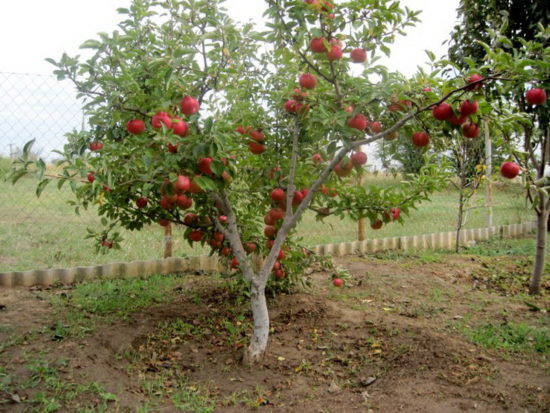
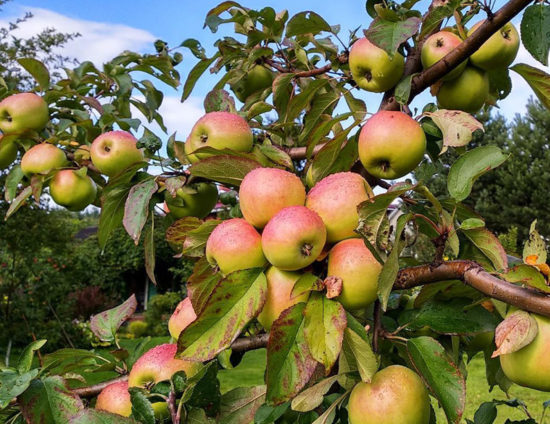
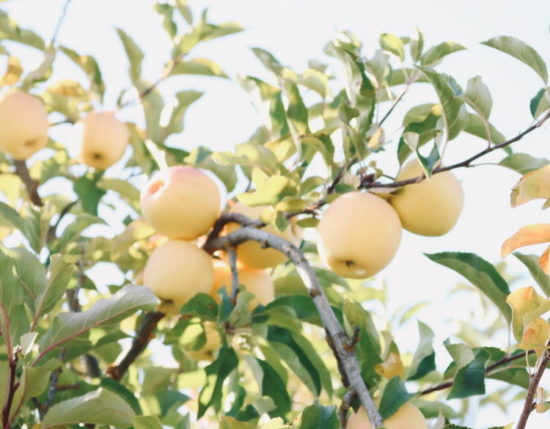
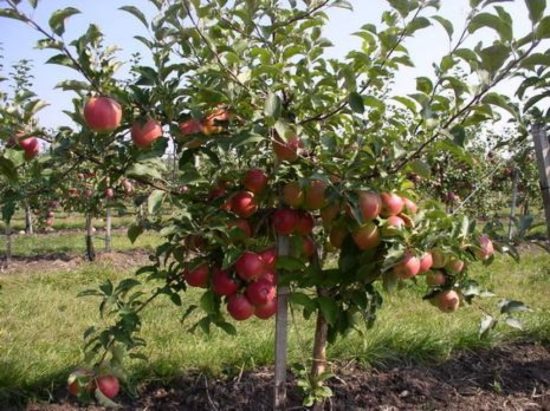
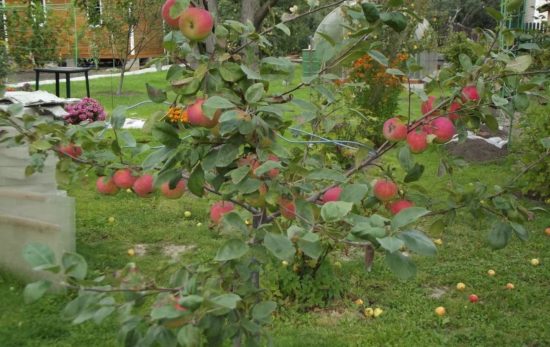
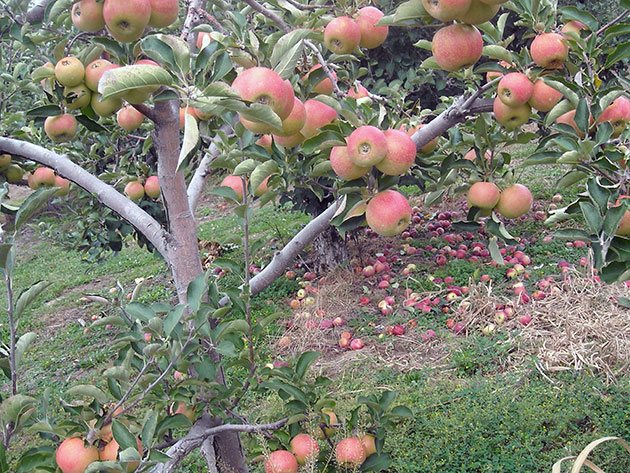
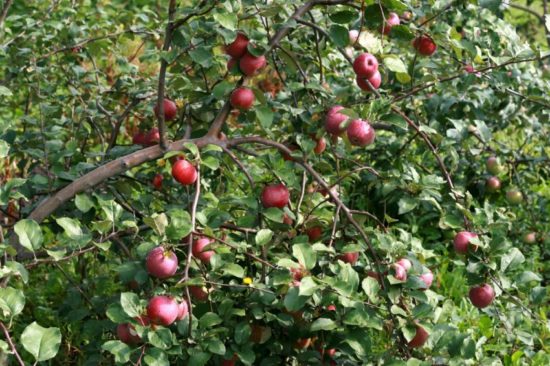
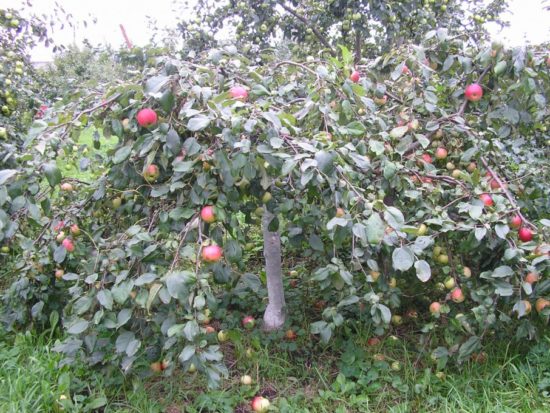
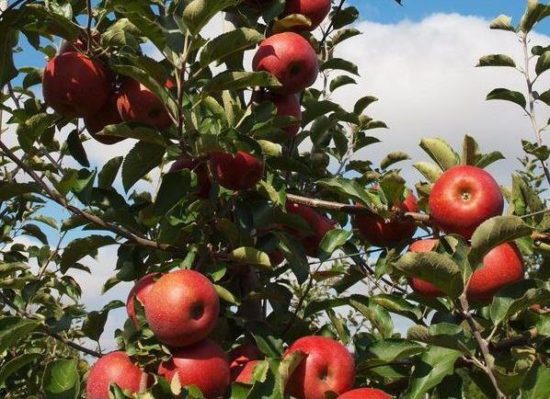

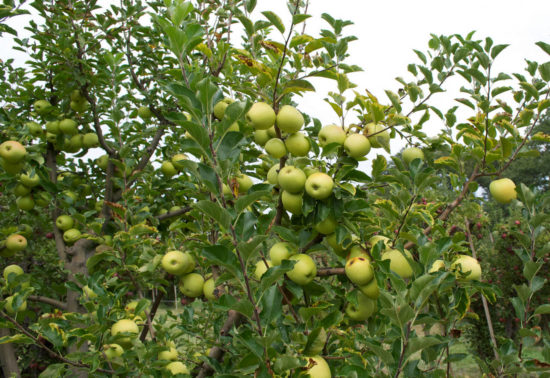
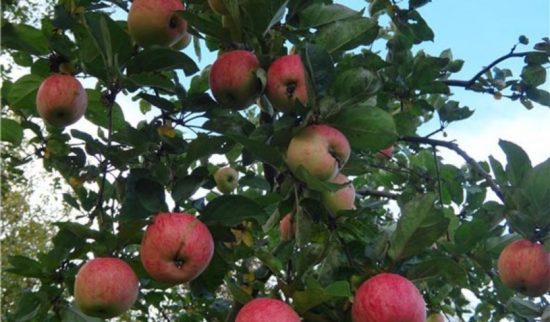
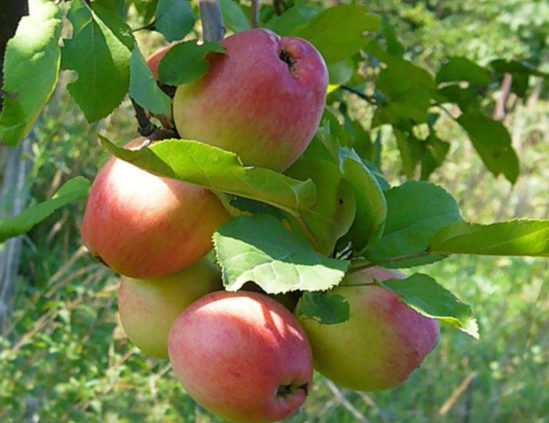
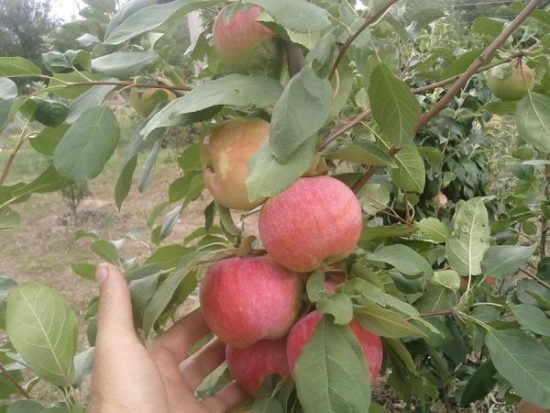
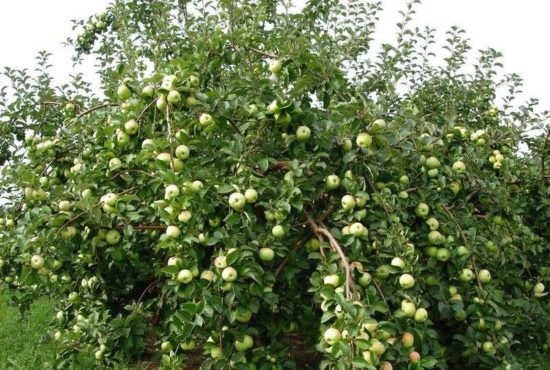
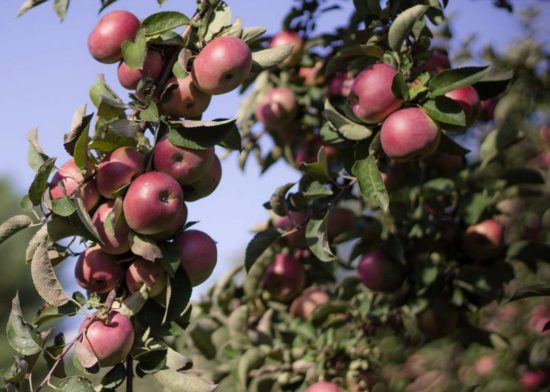
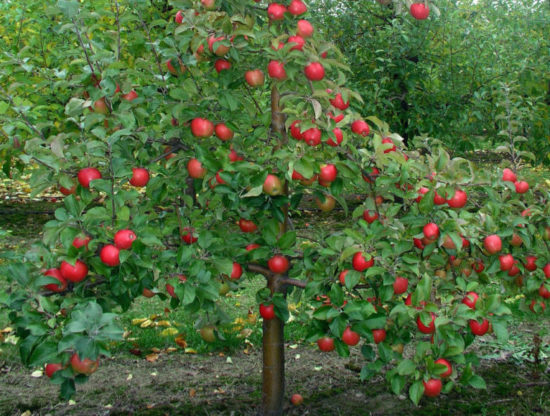
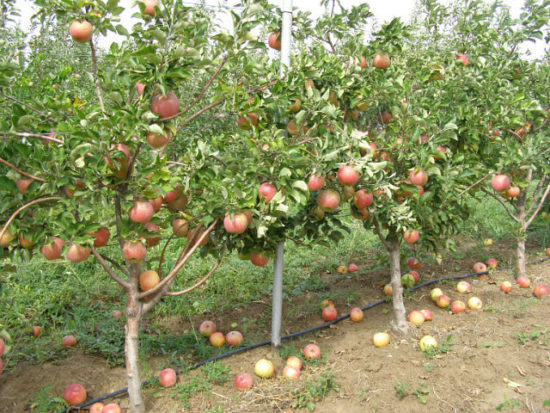
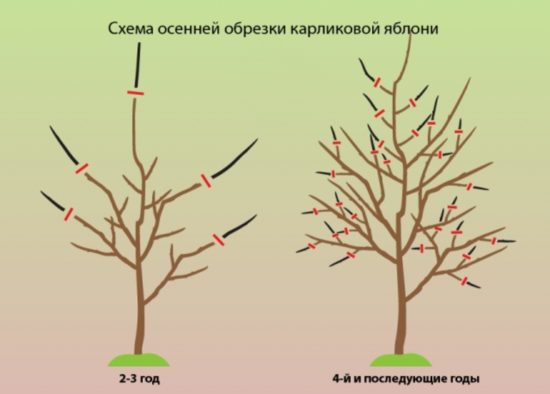


 CUCUMBERS NEVER GET SICK, I'VE BEEN USING ONLY THIS FOR 40 YEARS! I SHARE A SECRET WITH YOU, CUCUMBERS ARE LIKE THE PICTURE!
CUCUMBERS NEVER GET SICK, I'VE BEEN USING ONLY THIS FOR 40 YEARS! I SHARE A SECRET WITH YOU, CUCUMBERS ARE LIKE THE PICTURE! You can dig a bucket of potatoes from each bush. Do you think these are fairy tales? Watch the video
You can dig a bucket of potatoes from each bush. Do you think these are fairy tales? Watch the video
 How our fellow gardeners work in Korea. There is a lot to learn and just fun to watch.
How our fellow gardeners work in Korea. There is a lot to learn and just fun to watch. Eye trainer. The author claims that with daily viewing, vision is restored. They don't charge money for views.
Eye trainer. The author claims that with daily viewing, vision is restored. They don't charge money for views. A 3-ingredient cake recipe in 30 minutes is better than Napoleon. Simple and very tasty.
A 3-ingredient cake recipe in 30 minutes is better than Napoleon. Simple and very tasty. Therapeutic exercises for cervical osteochondrosis.A complete set of exercises.
Therapeutic exercises for cervical osteochondrosis.A complete set of exercises. Which indoor plants match your zodiac sign?
Which indoor plants match your zodiac sign? What about them? Excursion to German dachas.
What about them? Excursion to German dachas.